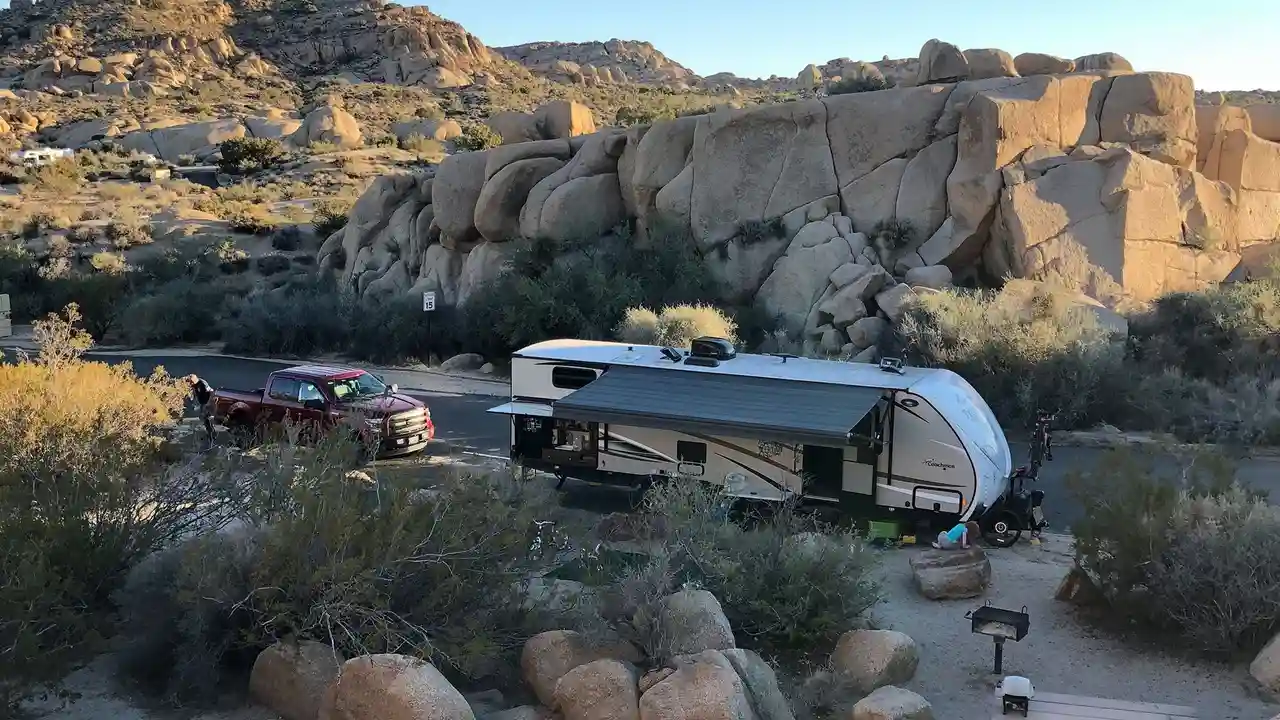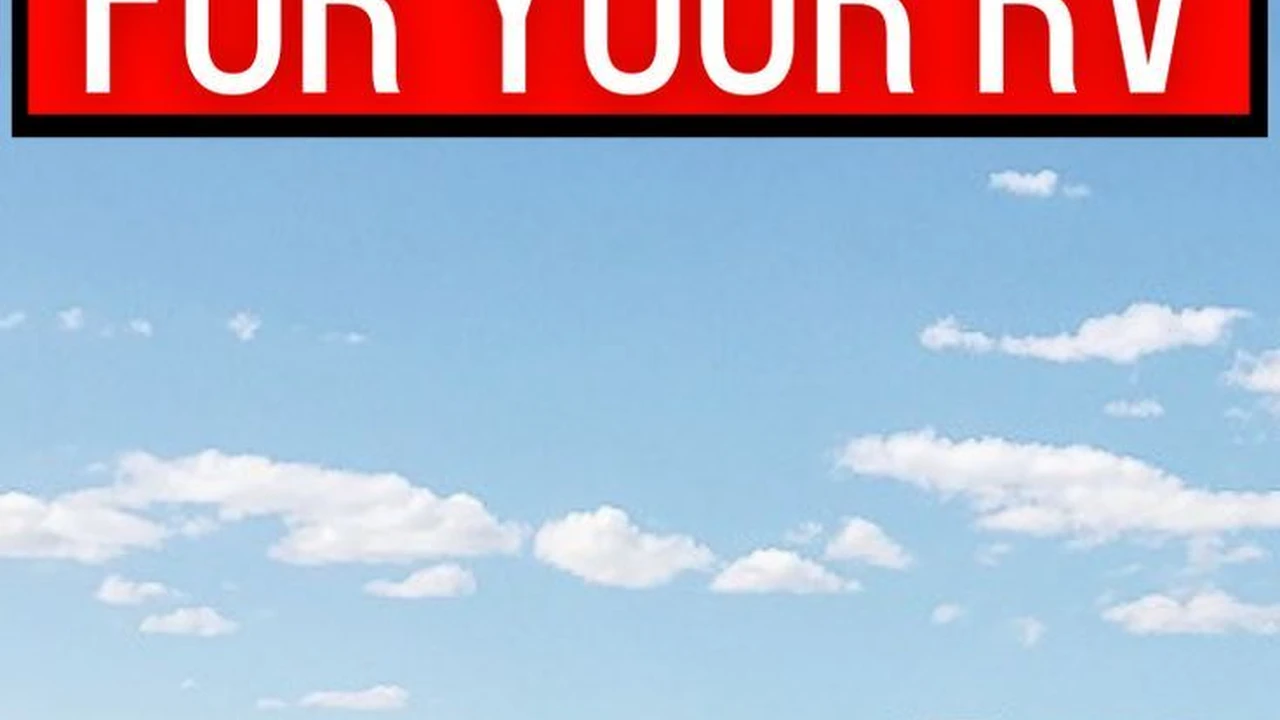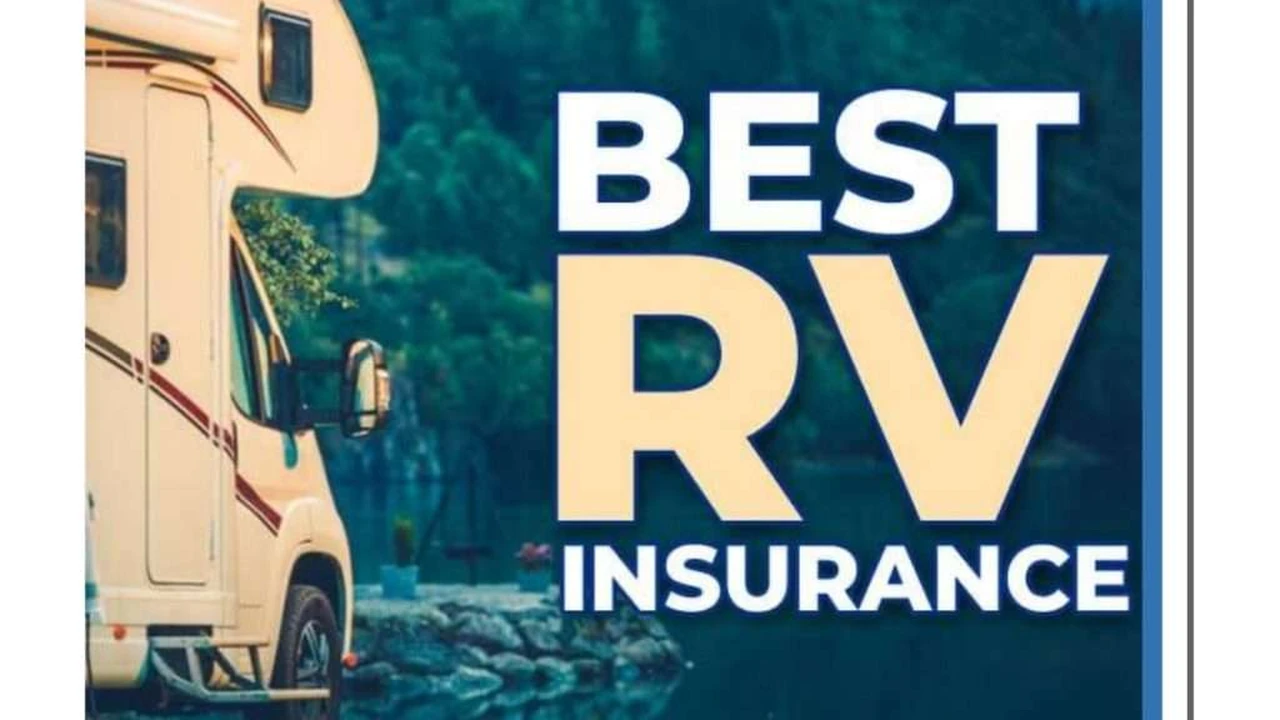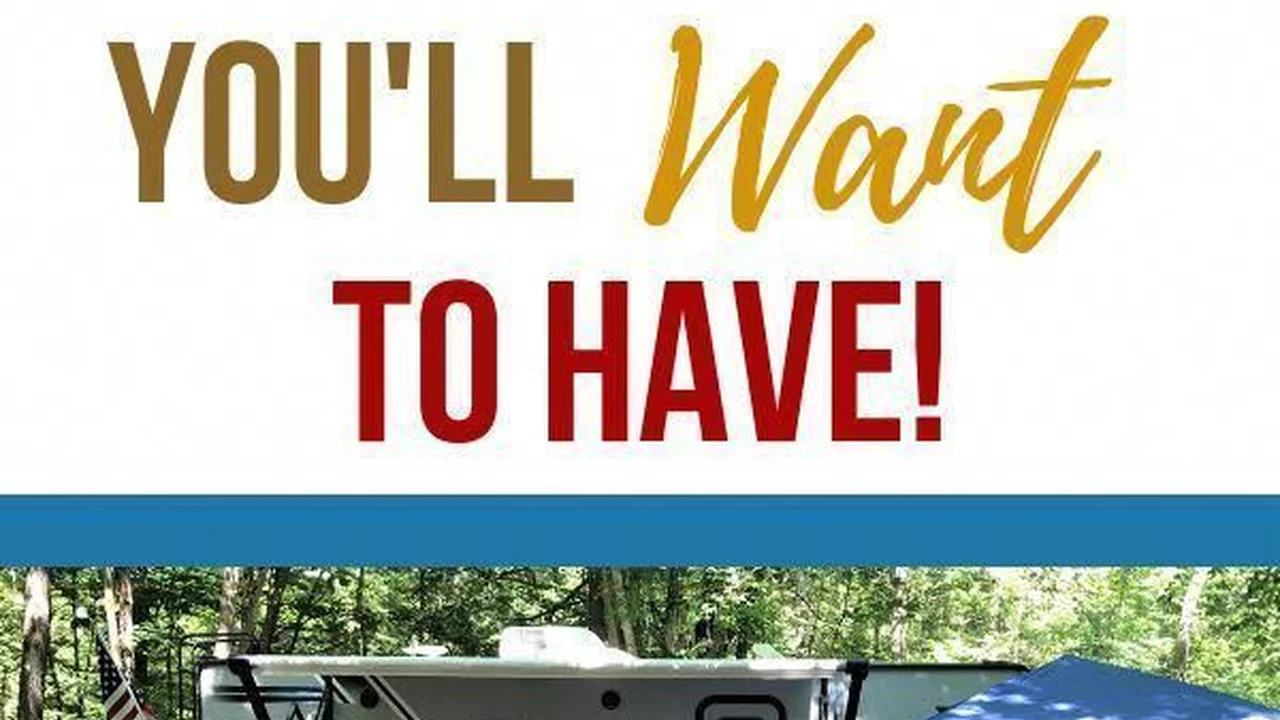Best Time to RV Camp in the California Desert

California Desert RV Camping Season Overview
So, you're thinking about RV camping in the California desert? Excellent choice! But before you pack your bags and hit the road, let's talk about timing. The California desert isn't exactly known for its mild temperatures year-round. In fact, summer can be downright brutal. We're talking triple-digit heat that can make even the most seasoned RVers reconsider their life choices. That's why understanding the best time to visit is crucial for a comfortable and enjoyable experience.
The sweet spot for California desert RV camping is generally from October to April. During these months, the temperatures are much more manageable, ranging from mild to warm during the day and cooler at night. This allows you to actually enjoy outdoor activities like hiking, exploring, and stargazing without melting into a puddle of sunscreen and regret.
Detailed Look at the Best Months for Desert RVing
October and November RV Camping: Shoulder Season Bliss
October and November are fantastic months to RV camp in the California desert. The intense summer heat has finally subsided, and the crowds haven't quite arrived yet. Daytime temperatures typically hover in the 70s and 80s, making it perfect for hiking and exploring. Nighttime temperatures can drop into the 50s, so be sure to pack layers. This is prime time for enjoying the desert's natural beauty without the extreme temperatures.
Pros:
- Pleasant daytime temperatures
- Fewer crowds than peak season
- Good for hiking and outdoor activities
Cons:
- Nights can be chilly
December and January RV Camping: Holiday Desert Escapes
December and January offer a unique opportunity to escape the winter blues and enjoy the relative warmth of the California desert. While daytime temperatures may be cooler than October and November (typically in the 60s), it's still significantly warmer than many other parts of the country. Plus, the holiday season can be a magical time to experience the desert, with many RV parks offering festive events and decorations.
Pros:
- Escape the winter cold
- Holiday festivities at some RV parks
- Good for quiet relaxation
Cons:
- Daytime temperatures can be cool
- Potential for occasional rain
February and March RV Camping: Peak Season and Wildflowers
February and March are arguably the most popular months for RV camping in the California desert. The weather is typically perfect, with daytime temperatures in the 70s and 80s, and the desert landscape comes alive with wildflowers in full bloom. However, be prepared for larger crowds and higher prices during this peak season. Book your RV park reservations well in advance to avoid disappointment.
Pros:
- Ideal temperatures
- Wildflower blooms
- Lots of activities and events
Cons:
- Larger crowds
- Higher prices
- Reservations are essential
April RV Camping: A Last Chance for Desert Fun
April can still be a great time to RV camp in the California desert, but the temperatures are starting to creep up. Daytime temperatures can reach into the 80s and even 90s, so be prepared for some heat. However, the crowds are starting to thin out, and you can often find better deals on RV park rentals. If you're comfortable with warmer temperatures, April can be a great option.
Pros:
- Fewer crowds
- Potentially lower prices
Cons:
- Temperatures are starting to rise
RV Air Conditioner Recommendations for Desert Camping
Let's face it, even during the "best" months, the California desert can still get warm. Having a reliable RV air conditioner is essential for a comfortable camping experience. Here are a few recommendations:
Dometic Brisk II RV Air Conditioner
The Dometic Brisk II is a popular choice for RVers due to its affordability and reliable performance. It's available in various BTU ratings to suit different RV sizes. It's known for being relatively quiet and efficient.
Use Cases: Ideal for smaller to medium-sized RVs, weekend trips, and budget-conscious campers.
Pricing: Typically ranges from $500 to $800 depending on the BTU rating.
Coleman Mach 15 RV Air Conditioner
The Coleman Mach 15 is a powerful RV air conditioner that's designed to cool larger RVs quickly and efficiently. It's a popular choice for full-time RVers and those who travel in hot climates.
Use Cases: Recommended for larger RVs, full-time living, and extremely hot climates.
Pricing: Typically ranges from $800 to $1200.
RecPro RV Air Conditioner
RecPro offers a range of RV air conditioners, including both rooftop and window units. They are known for their affordability and ease of installation.
Use Cases: Suitable for smaller RVs, DIY installations, and budget-friendly options.
Pricing: Typically ranges from $400 to $700.
RV Air Conditioner Comparison: Dometic vs Coleman vs RecPro
Choosing the right RV air conditioner depends on your specific needs and budget. Here's a quick comparison:
| Feature | Dometic Brisk II | Coleman Mach 15 | RecPro |
|---|---|---|---|
| Cooling Power | Medium | High | Low to Medium |
| Noise Level | Relatively Quiet | Moderate | Moderate |
| Price | Mid-Range | High | Low |
| Installation | Professional Recommended | Professional Recommended | DIY Possible |
| Best For | Smaller to Medium RVs | Larger RVs, Hot Climates | Budget-Conscious Campers |
RV Generator Recommendations for Desert Camping Power
Even with hookups, power outages happen. And if you are boondocking, a generator is essential. Here are a few recommendations for RV generators suitable for desert camping:
Honda EU2200i Generator
The Honda EU2200i is a popular choice for its quiet operation, fuel efficiency, and reliability. It's a great option for powering essential appliances like your air conditioner, refrigerator, and lights.
Use Cases: Ideal for powering essential appliances, boondocking, and noise-sensitive environments.
Pricing: Typically ranges from $1000 to $1200.
Champion Power Equipment 3400-Watt Dual Fuel RV Ready Portable Inverter Generator
The Champion 3400-Watt Dual Fuel generator offers the flexibility of running on either gasoline or propane. It's a good option for those who want to have a backup fuel source.
Use Cases: Suitable for powering multiple appliances, dual-fuel options, and RVs with larger power needs.
Pricing: Typically ranges from $800 to $1000.
Westinghouse iGen2500 Portable Inverter Generator
The Westinghouse iGen2500 is a lightweight and portable generator that's perfect for smaller RVs and camping trips. It's also known for its quiet operation.
Use Cases: Recommended for smaller RVs, lightweight portability, and quiet operation.
Pricing: Typically ranges from $500 to $700.
RV Generator Comparison: Honda vs Champion vs Westinghouse
Here's a comparison of the RV generators mentioned above:
| Feature | Honda EU2200i | Champion 3400-Watt Dual Fuel | Westinghouse iGen2500 |
|---|---|---|---|
| Power Output | 2200 Watts | 3400 Watts | 2500 Watts |
| Fuel Type | Gasoline | Gasoline/Propane | Gasoline |
| Noise Level | Very Quiet | Moderate | Quiet |
| Portability | High | Moderate | High |
| Price | High | Mid-Range | Low |
| Best For | Essential Appliances, Quiet Operation | Multiple Appliances, Dual Fuel | Smaller RVs, Portability |
Essential RV Camping Gear for the California Desert
Beyond air conditioning and generators, there's other gear that will make your desert RV camping trip more enjoyable.
Water Storage Solutions
Water is precious in the desert. Make sure you have adequate water storage capacity in your RV and consider bringing extra water containers. A portable water filter is also a good idea.
Product Recommendation: WaterBrick Stackable Water Container (provides durable and stackable water storage)
Sun Protection
The desert sun is intense. Pack plenty of sunscreen, hats, sunglasses, and lightweight, long-sleeved clothing to protect yourself from sunburn and heatstroke.
Product Recommendation: Coolibar UPF 50+ Clothing (offers excellent sun protection and is comfortable to wear)
Shade Structures
Creating shade around your campsite is essential for staying cool and comfortable. Consider bringing an awning, a portable shade canopy, or even a large umbrella.
Product Recommendation: ARB 4x4 Accessories Awning (provides durable and reliable shade for your campsite)
Navigation Tools
Cell service can be spotty in the desert. Bring a good map, a GPS device, or a satellite communicator to help you navigate.
Product Recommendation: Garmin inReach Mini 2 (allows for satellite communication and SOS messaging in remote areas)
First-Aid Kit
A well-stocked first-aid kit is essential for any camping trip, but especially in the desert where medical assistance may be far away.
Product Recommendation: Adventure Medical Kits Ultralight/Watertight Medical Kit (compact and comprehensive first-aid kit for outdoor adventures)
Choosing the Right California Desert RV Park
Not all RV parks are created equal. Research and choose an RV park that meets your needs and preferences. Consider factors like amenities, location, and price. Some popular options include:
Joshua Tree National Park Campgrounds
For a more rustic experience, consider camping inside Joshua Tree National Park. However, be aware that these campgrounds typically have limited amenities and require reservations well in advance.
Palm Springs/Joshua Tree KOA
The Palm Springs/Joshua Tree KOA offers a variety of amenities, including a pool, hot tub, and laundry facilities. It's a good option for families and those who want a more comfortable camping experience.
Borrego Palm Canyon Campground
Located in Anza-Borrego Desert State Park, Borrego Palm Canyon Campground offers stunning desert scenery and access to hiking trails.
California Desert RV Camping Safety Tips
Safety should always be a top priority when RV camping in the desert. Here are a few tips to keep in mind:
Stay Hydrated
Drink plenty of water throughout the day, even if you don't feel thirsty. Avoid sugary drinks and alcohol, which can dehydrate you.
Be Aware of the Heat
Avoid strenuous activities during the hottest part of the day. Seek shade whenever possible and wear light-colored, loose-fitting clothing.
Watch Out for Wildlife
The desert is home to a variety of wildlife, including snakes, scorpions, and spiders. Be aware of your surroundings and avoid approaching or feeding any animals.
Let Someone Know Your Plans
Before heading out on a camping trip, let someone know your itinerary and when you expect to return. This will help ensure that someone knows where to look for you if you encounter any problems.
Carry a Communication Device
As mentioned earlier, cell service can be unreliable in the desert. Carry a satellite communicator or a two-way radio to stay in touch with the outside world.
Embrace the Desert Experience
RV camping in the California desert can be an unforgettable experience. By planning ahead, packing the right gear, and following safety precautions, you can enjoy the stunning scenery, unique wildlife, and peaceful solitude that the desert has to offer.
Remember to respect the environment, leave no trace, and enjoy the journey!
Exploring California Desert State Parks and National Parks
The California desert boasts several amazing parks perfect for RV exploration. Let's dive into a few:
Anza-Borrego Desert State Park: A Wildflower Wonderland
Anza-Borrego is California's largest state park, offering incredible hiking, stargazing, and, of course, stunning wildflower blooms in the spring (usually February and March). Check the park's website for bloom reports before you go. RV camping is available at several campgrounds within the park, but reservations are highly recommended, especially during peak season.
Death Valley National Park: Extremes and Beauty
Death Valley is a land of extremes – the hottest, driest, and lowest national park. While summer RV camping is not advised due to the intense heat, the cooler months (October-April) offer a chance to explore this unique landscape. Visit Zabriskie Point for sunrise, hike through Golden Canyon, and marvel at the salt flats of Badwater Basin. Remember to pack plenty of water and be prepared for varying temperatures.
Joshua Tree National Park: Iconic Landscapes and Rock Climbing
Joshua Tree is famous for its namesake trees and impressive rock formations. Hike among the boulders, go rock climbing, and enjoy the dark night skies for stargazing. Several campgrounds within the park accommodate RVs, but reservations are essential, particularly during the spring and fall. Be sure to check out Hidden Valley, Skull Rock, and Keys View for panoramic vistas.
California Desert RV Camping: Leave No Trace Principles
Protecting the delicate desert environment is crucial for future generations. Adhere to the Leave No Trace principles:
- Plan Ahead and Prepare: Research your destination, pack appropriately, and make reservations where necessary.
- Travel and Camp on Durable Surfaces: Stay on established trails and campsites to avoid damaging vegetation.
- Dispose of Waste Properly: Pack out everything you pack in, including trash, food scraps, and toilet paper. Use designated restrooms or pack out human waste using a waste bag system.
- Leave What You Find: Leave rocks, plants, and artifacts as you find them. Do not carve or deface natural surfaces.
- Minimize Campfire Impacts: Use established fire rings or stoves for cooking. Keep campfires small and contained, and never leave a fire unattended. Ensure the fire is completely extinguished before leaving.
- Respect Wildlife: Observe wildlife from a distance and never feed them. Store food properly to prevent attracting animals to your campsite.
- Be Considerate of Other Visitors: Minimize noise and respect the peace and quiet of the desert.
California Desert RV Camping: Accessibility Considerations
When planning your California desert RV camping trip, consider accessibility for all members of your party. Some RV parks and campgrounds offer accessible campsites, restrooms, and other facilities. Contact the specific location ahead of time to inquire about accessibility features. Also, research accessible trails and activities within the parks you plan to visit.
California Desert RV Camping: Pet-Friendly Options
Many RV parks and campgrounds in the California desert welcome pets, but it's essential to check the specific rules and regulations before you go. Keep your dog on a leash at all times, clean up after them, and be mindful of the heat. Provide your pet with plenty of water and shade, and never leave them unattended in your RV during hot weather.
California Desert RV Camping: Budgeting Your Trip
The cost of RV camping in the California desert can vary depending on the time of year, location, and amenities. Here are some factors to consider when budgeting your trip:
- RV Park Fees: RV park fees can range from $30 to $100+ per night, depending on the location and amenities.
- Fuel Costs: Factor in the cost of fuel for your RV, as well as any side trips you plan to take.
- Food and Supplies: Budget for groceries, drinks, and other supplies.
- Activities and Entrance Fees: Consider the cost of entrance fees to national and state parks, as well as any activities you plan to participate in.
- Emergency Fund: It's always a good idea to have an emergency fund to cover unexpected expenses.
California Desert RV Camping: Stargazing Opportunities
The California desert offers some of the darkest night skies in the country, making it a prime location for stargazing. Bring a telescope or binoculars to get a closer look at the stars, planets, and galaxies. Check the moon phase before you go, as a full moon can wash out the stars. Several locations within the desert are designated as International Dark Sky Parks, ensuring minimal light pollution.
California Desert RV Camping: Photography Tips
The California desert provides endless opportunities for stunning photography. Capture the dramatic landscapes, colorful sunsets, and unique wildlife. Use a wide-angle lens to capture the vastness of the desert, and a telephoto lens to zoom in on distant subjects. Experiment with different angles and perspectives to create unique and compelling images. Don't forget to protect your camera from the dust and sand.
California Desert RV Camping: Dealing with Desert Wildlife
While observing wildlife is part of the desert experience, it's important to do so safely and responsibly. Never approach or feed animals, as this can disrupt their natural behavior and make them dependent on humans. Store food properly to prevent attracting animals to your campsite. Be aware of your surroundings and watch out for snakes, scorpions, and spiders. If you encounter a wild animal, give it plenty of space and avoid making sudden movements.
California Desert RV Camping: Finding Hidden Gems
Beyond the popular parks and attractions, the California desert is full of hidden gems waiting to be discovered. Explore off-the-beaten-path hiking trails, visit small towns and communities, and discover unique geological formations. Talk to locals and fellow travelers for recommendations on hidden gems in the area. Be sure to do your research and prepare for challenging terrain and limited services.
:max_bytes(150000):strip_icc()/277019-baked-pork-chops-with-cream-of-mushroom-soup-DDMFS-beauty-4x3-BG-7505-5762b731cf30447d9cbbbbbf387beafa.jpg)





